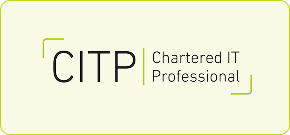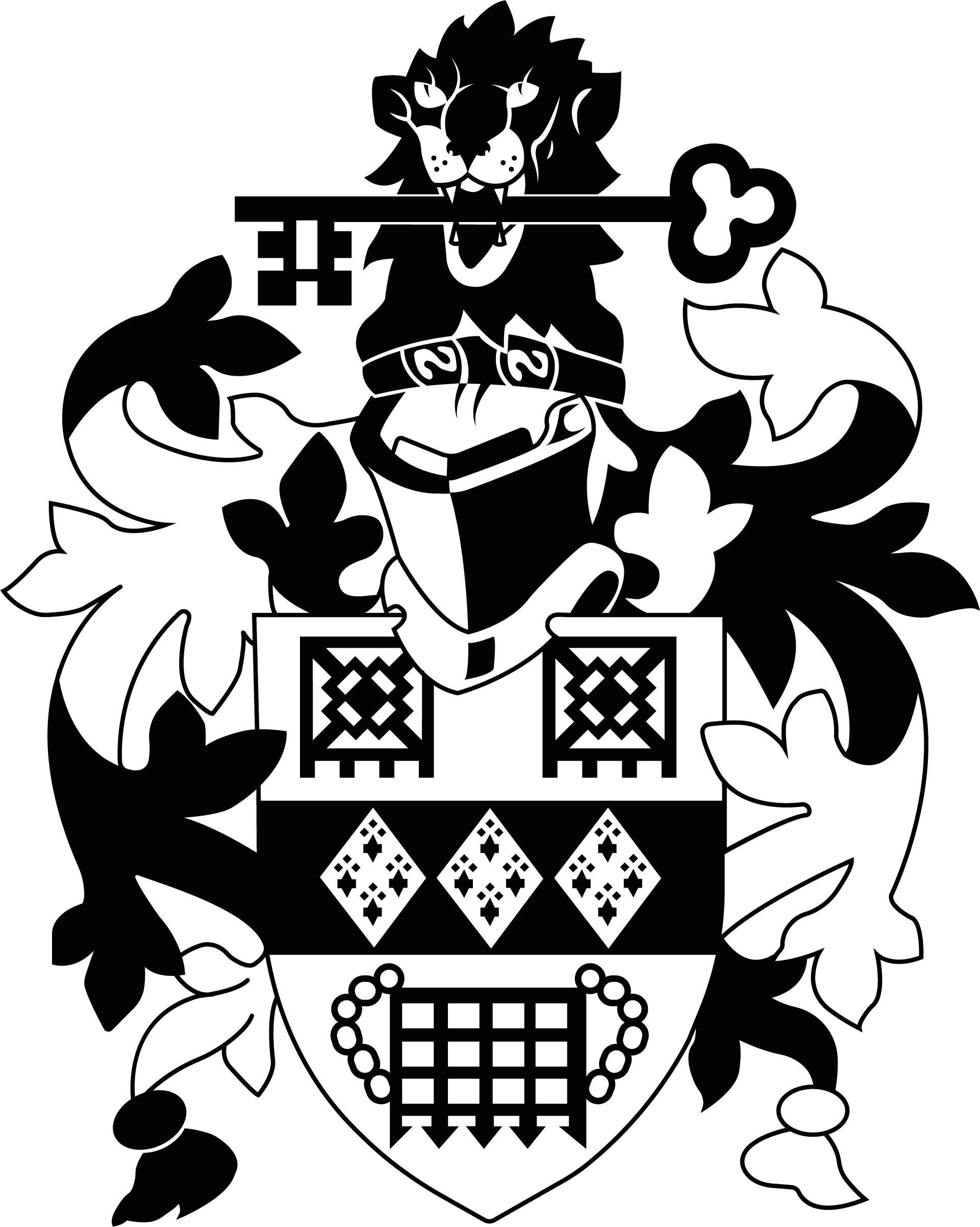CITP Standard
Introduction
Chartered IT Professional (CITP) is the flagship standard for professionals working in the IT industry. Through their skills and experience Chartered IT Professionals demonstrate that they:
• Have a depth and breadth of technical IT knowledge and skills.
• Have experience of applying technical knowledge and skills.
• Apply leadership skills.
• Are able make effective decisions.
• Can analyse and resolve complex problems.
In addition, they can demonstrate that they display the values expected of a Chartered IT Professional:
• Commitment to maintain an awareness of developments in the industry and keeping their skills up to date.
• Acting as a role model.
• Considering the ethical implications related to their professional undertakings.
To apply for CITP applicants must be a member of BCS or a body licensed to award CITP and actively engaged within the scope of the IT profession. If a member of BCS they must hold Professional Membership as a minimum.
The CITP criteria can be found at Annex A.

Technical Expertise
To meet the requirements of technical expertise applicants will need to provide evidence for two distinct areas:
• Depth of Knowledge and Skills
• Breadth of Knowledge
Each will require the applicant to draw on SFIA skills, evidencing their knowledge against a number of skills at a particular level.
Depth of Knowledge and Skills
Depth of Knowledge and Skills requires the applicant to demonstrate through qualifications, certifications and/or experience that they have the required level of knowledge and skills against a minimum of four SFIA skills. They must deliver evidence of SFIA level 5 for a minimum of two of these skills and a minimum of SFIA level 3 for the other two. SFIAPlus.
Breadth of Knowledge
Breadth of Knowledge requires the applicant to demonstrate through qualifications, certifications and/or experience that they have level of knowledge at a minimum of SFIA Level 3 for a minimum of five SFIA skills from outside their area of practice/specialism. SFIAPlus.
Professional Behaviours
The professional behaviours of Leadership, Decision Making and Problem Solving will be evidenced drawing from task/projects/activities through which they have applied the depth of technical knowledge and skills evidenced within their application. Evidence of the CITP values will be through:
• CPD the applicant has undertaken and their plan for future CPD.
• How they act as a role model within the industry.
• How they consider and act upon ethical considerations with the task/projects they undertake
*Important Note:
Ethical considerations are to include issues relating to:
• Sustainability.
• Equality, Diversity and Inclusion (EDI).
• Legal, social and/or professional issues.
Applying for CITP
All applicants will be required to demonstrate an appropriate level of knowledge and skills for a minimum of four SFIA skills. The applicant is to display a knowledge at SFIA Level 5 for a minimum of two skills and level 3 or 4 for two further skills relevant to their role and experience.
They will also need to demonstrate the application of these skills and knowledge through the evidence provided to meet the behavioural requirements of the standard. SFIAPlus provides examples of the types of work activities associated with SFIA skills at the levels relevant to that skill. It also provides examples of the technical knowledge relevant to skills at the selected level.
Applicants should review the framework and select the skills most appropriate to their role and experience. They will need to provide evidence of the technical knowledge and skills identified within the framework, either from qualifications, certificates, experience or a mixture of these.
Where an applicant holds an accredited qualification the requirements of the depth and breadth of knowledge are considered to have been met. Evidence provided through experience needs to clearly demonstrate the applicant’s knowledge and skills relevant to the selected SFIA skill.
Specialisms
The approach outlined above applies to all applicants for CITP, however if the SFIA skills selected to evidence Part A.1 of the standard are from the same ‘Skills Family’ then applicants may identify their practice as within that specialism.
CITP specialist registration is now available for the disciplines of Cyber Security, Data and Analytics, Leadership, Change and Transformation and Education and Training, with further specialisms in development.
Note:
Skills families for these 4 specialisms have been created and further specialisms and associated skills families will be developed going forward.
Therefore, to be recognised as Chartered IT Professional specialising in Cyber Security the four skills evidenced against part A.1 of the standard (two skills at SFIA level 5 and two at a minimum of level 3) must be from the Cyber Security skills family.
What if my specialism is not available?
In the first instance an applicant should apply through the process outlined above, selecting the skills that are relevant to their role and experience.
As BCS develops further specialisms and their skills families applicants/registrants will be able to:
• Claim their specialism recognition if the evidence provided in the initial assessment covered the appropriate skills from their specialism.
• Provide some further evidence to cover their specialism if the original application did not cover these.
This could be met through qualifications, certifications and/or experience.
Recognition of Specialism
When achieving CITP applicants will receive a CITP certificate and an additional certificate noting the specialism and the skills against which this was achieved. They will also receive a digital badge identifying the specialism and will be assigned to this specialism on the register.
As new specialisms become available, applicants may apply for the specialism as outlined above and will receive an updated skills certificate and digital badge, the register will also be amended to reflect the specialism.
What if a registrant changes specialism?
If a registrant changes role and moves into another specialism they may apply to have their specialism updated. In this instance they would need to provide the necessary evidence against the relevant skills within the new specialism (two at level 5 and two and level 3/4 ). If they have already met the evidence for some of the skills they may only need to provide evidence against the outstanding skills.
Annex A – CITP Criteria
Section 1 - Technical expertise
This relates to the technical skills and knowledge relevant to your role/experience and the ability to apply these skills and knowledge within a real world/work environment.
A.1 Depth of Technical Knowledge and Skills
This relates to the technical skills and knowledge relevant to your role/experience and aligned to the technical knowledge and skills identified within SFIAPlus. Evidence can come from qualifications, certifications, experience or a mixture of these.
A.2 Breadth of Technical knowledge
This can be evidenced through qualifications, certificates and/or experience demonstrating a knowledge of IT beyond applicant’s area of IT practice/specialism.
Section 2 – Technical competence and Professional behaviours
Evidence provided within this section must relate to the skills evidenced within section A.1 Parts B, C and D should be answered using the STARE approach
This relates to having an appropriate level of autonomy and influence within your field of work. You must evidence how you assign tasks and responsibilities and influence organisations, customers, suppliers, partners and/or peers.
B.1 Works under Broad Directions
Fully responsible for:
a) meeting allocated technical objectives and/or
b) project/supervisory objectives.
B.2 Establishes milestones and has significant role in the assignment of tasks and/or responsibilities.
B.3 Builds appropriate and effective business relationships with effective formal and informal communications skills.
This section may be covered by an example of an IT task/project for which the applicant had a high degree of responsibility, within which they can demonstrate how they have assigned tasks and/or responsibility to others (B.1). In owning the task the applicant can demonstrate how they set/agreed milestones (B.2) and how they identified, managed and communicated with stakeholders. (B.3)
This relates to demonstrating the ability to make effective decisions that have been appropriately identified, considered and analysed.
C.1 Makes decisions that impact the success of assigned work delivering results within agreed timescales and deadlines.
C.2 Analyses, designs, plans, executes and evaluates work to time, cost and quality targets and takes all requirements into account when making proposals.
C.3 Analyses requirements and advises on scope and options for continuous operational improvement.
C.4 Recognises the scope of their expertise and when to draw on other specialists to help inform decisions.
This section requires evidence of the applicant’s ability to make effective decisions. This must be a significant decision relating to IT. An example may be that the organisation has chosen to replace a significant IT system (e.g. CRM or organisation’s HR system). Within such an example the applicant could display the agreed outcomes, timescales and deadlines (C.1). How they analysed the requirement, evaluated the options considering factors associated with cost, quality etc and developed the implementation plan to ensure delivery within agreed timelines (C.2 and C.3) This example could also include the different IT specialisms that would be required to support delivery (C.4)
Undertakes appropriate analysis of problems to deliver an effective solution to meet organisation, client or customer needs.
D.1 Employs appropriate problem solving techniques, analysing the issue and identifying options.
D.2 Demonstrates creativity, innovation and ethical thinking when applying a solution for the benefits of the organisation, customer or stakeholder.
D.3 Applies fundamental principles in resolving problems in a wide and often unpredictable range of contexts.
This section may be covered through the resolution of a complex IT problem, through which the applicant is able to demonstrate how they analysed/diagnosed the problem employing appropriate techniques (D.1). Sought solution that were creative/innovative to meet the requirements of the organisation, client or stakeholders (D.2). The analyses of the problem and selection of the solution provides the opportunity for the candidate to demonstrate drawing of their technical knowledge and skills and how this influenced selection of the most appropriate solution (D.3)
These are the values and commitments that would be expected of a Chartered IT Professional.
E.1 Maintains an awareness of developments in the industry, takes initiative to keep their skills up to date.
This must be evidence of CPD that the applicant has undertaken within the last 2 years, including the impact of the activity. The applicant is also to include details of CPD they plan to undertake during the next 12 months.
E.2 Acts as a role model, supporting and encouraging development of others.
This should be evidence of how the applicant has supported the development of others and could be through coaching, mentoring or supporting development activities.
E.3 Considers the ethical implications with all their professional undertakings and manages issues appropriately.
Examples of ethical issues to be considered are:
• Sustainability
• Equality, Diversity and Inclusion (EDI)
• Legal, social and/or professional issues.
This will be covered through applying the E component of STARE throughout the application. The evidence provided across sections B, C and D should cover each of the examples listed at least once.
Annex B – CITP accredited qualifications
The qualifications below are accredited towards Chartered IT Professional (CITP) through the accredited route. If your qualification is not listed, please follow the experiential route.
Level 7 apprenticeship
- Advanced Digital Forensic Professional (integrated degree) (ST1409)
- AI Data Specialist (ST0763) - partially accredited. See level 7 apprenticeships guidance for details
- Digital and Technology Solutions Specialist (integrated degree) (ST0482)
Industry certifications
- Deloitte Certified Senior Architect*
- Deloitte Certified Chief Architect*
- IBM Expert Architect (level 2)
- IBM Expert Technical Specialist (level 2)
- IBM Expert Developer (level 3)
*Please contact your BCS Coordinator in Deloitte to request addition to the CITP register.
Higher education courses
All BCS accredited academic courses are searchable within the HE accredited courses database.








